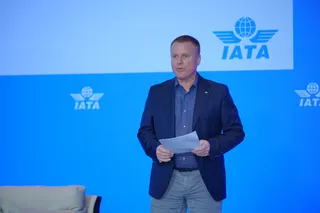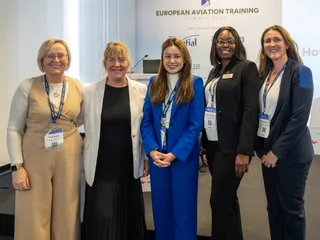IATA Identifies Critical Safety Priorities Amid Growing Operational Complexity
Contact Our Team
For more information about how Halldale can add value to your marketing and promotional campaigns or to discuss event exhibitor and sponsorship opportunities, contact our team to find out more
The Americas -
holly.foster@halldale.com
Rest of World -
jeremy@halldale.com

Aviation's operational landscape has grown markedly more complex, and the International Air Transport Association's priorities outlined at the World Safety and Operations Conference in Xiamen reflect an industry grappling with challenges that transcend traditional safety management approaches.
Mark Searle, IATA's Global Director Safety, said that conflicts and regulatory fragmentation have proliferated, resulting in airspace closures, drone incursions, and rising interference with global navigation satellite systems that "disrupt connectivity, undermine confidence, and threaten safety."
The association's response in China on Tuesday centres on defending and advancing global standards, using data to enhance performance, and fostering robust safety culture through leadership.
Perhaps most striking is the scale of GNSS interference growth, with reports increasing over 200% between 2021 and 2024.
IATA's response, developed jointly with EASA, encompasses monitoring, prevention tools, backup infrastructure, and civil-military coordination. Yet the challenge extends beyond GNSS. Radio spectrum protection faces pressure from 5G expansion, with markets including Australia, Canada, and the United States experiencing interference risks near airports and requiring costly aircraft retrofits.
IATA's data-driven initiatives demonstrate practical application of information sharing. The Turbulence Aware platform, now covering 3,200 aircraft including Air France, Etihad, and SAS, grew participation 25% over the past year. The SafetyIS database, drawing on flight data from 217 airlines, enabled early identification of collision-avoidance alert spikes at a Latin American airport, prompting swift intervention. The risk-based IOSA audit model has generated over 8,000 corrective actions by tailoring audits to individual airline operational profiles.
A troubling statistic emerged regarding accident investigations: only 58% of accidents between 2019 and 2023 have produced final reports, hindering the industry's ability to learn vital safety lessons whilst creating space for speculation and misinformation.
What IATA's priorities reveal is an industry facing systemic complexity requiring coordinated responses across regulatory, operational, and cultural dimensions. Yet global priorities mean little without ground-level implementation, that means training infrastructure.
The 23rd European Aviation Training Summit addresses precisely this challenge: how training organisations can build the data capabilities, safety culture, and operational resilience that IATA's priorities demand. When systemic challenges require coordinated responses, the training community's role in delivering them becomes critical.


